Diesel engine generators are powerful, and efficient machines that help homes and industrial units to run in the absence of electricity from the power grid.
These generators are all the more important for industrial and commercial units as a power outage can stall all operations, incurring heavy losses. That is why it is important to keep them in a good running condition, especially when they are not being used for an extended period of time.https://www.midamericaengine.com/diesel-engine-generator-governors/
In such cases, one of the most common issues that a diesel generator faces is wet stacking – a phenomenon that occurs when a generator is not run at its optimal operating temperature that is required to burn off the extra fuel and the carbon deposits that develop while the engine is running.
The excess fuel and carbon deposits get accumulated in the exhaust system, amounting to wet stacking.
Also read: Tips on Buying a Used Diesel Generator
One of the easiest ways to know if wet stacking is happening in your diesel engine generator is to check if the engine is continuously throwing out black smoke or if there is a black, semi-paste-like material oozing out of the exhaust system.
Incorrect air to fuel ratio, running the generator at sub-optimal operational temperature, not using it for a long period of time, or running it on too much or too little fuel are some of the main reasons for wet stacking.
Table of Contents
Wet Stacking in a Diesel Engine Generator
Diesel generators utilize the unburned fuel (diesel) to generate motion that is turned into electric energy. They come in a variety of sizes, power, and outputs and they are utilized in a variety of industries.
Be it construction sites, industrial setup, factories, manufacturing units, hospitals, hotels, schools, homes, entertainment avenues, or other similar establishments, diesel generators are useful machines in all circumstances and situations.
They have been in use for decades and their performance quotient has only gone up with the advancement of technology. But even these efficient machines can falter if they are not maintained or run inappropriately. And wet stacking is one such issue that reduces their performance efficiency to a great degree.
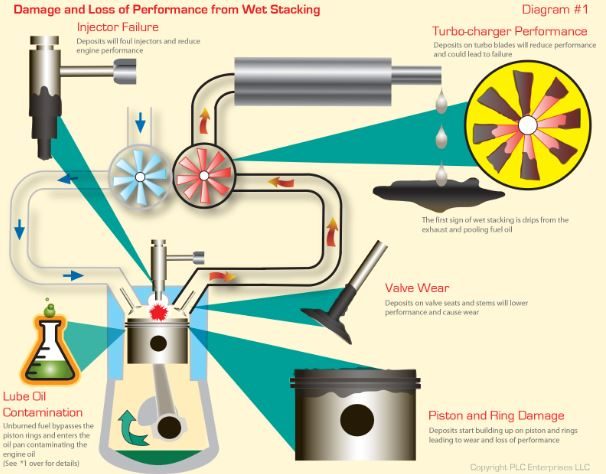
Every machine has a performance index, where it provides the best result when utilized in the optimum recommended conditions. If any of the pre-requisites are not met by the operators, their efficiency goes down or they develop certain technical issues.
Wet stacking is one of them. Diesel engine generators must be operated on a recommended load. When the engine runs on less than the desired load, it uses very little unburned fuel to produce power that is only enough to run and negate friction. This lowers the optimal temperature within the generator and affects its performance.
Running the generator at optimum temperature is necessary to completely burn the fuel and other debris that is produced due to the burning of the fuel.
The wanted substances left behind due to insufficient temperature deposit on the exhaust system, which eventually comes out as a thick, black semi-liquid substance.
This is what is called wet stacking. Any machine, when run on inadequate parameters will have a below-par performance, and diesel generators are no exceptions. In order to maximize their output, it is essential to know the basics of its operations and the consequences that come from undesirable operations.
Effects Of Wet Stacking
One of the major issues that generators develop due to wet stacking is the accumulation of unburned fuel on the exhaust system.
This becomes a cyclic process and can escalate into a tricky situation very quickly. A generator running on less than maximum load and temperature will have unburned fuel and other similar substances accumulating in the exhaust system including exhaust pipe, turbocharger, and exhaust valves.
When wet stacking happens, unburned fuel also starts getting deposited on the injector nozzle, which starts leaking with huge droplets of fuel into the combustion cylinders.

More fuel filling into the cylinders results in a higher amount of unburnt fuel in the generator and an increased rate of unburnt substances accumulating in the exhaust system.
This entire cycle keeps on repeating itself throughout the duration of wet stacking, making the diesel generator work on reduced efficiency. If not addressed immediately, it can result in expensive repairs and replacements.
Want to Prevent Wet Stacking – Here’s How to do It
The best way to protect your diesel engine experiencing wet stacking is to simply follow these steps –
- Keep the diesel engine in good running condition.
- Maintain it well, get it serviced on a timely basis.
- Change the engine oil regularly
- Monitor the engine performance every month, and ensure that there is no impending major engine overhaul.
- Make sure to turn on the diesel engines every few days. When the diesel engine runs frequently, you can rest assured of a relatively longer engine life.
If however, you are already noticing a prematurely worn engine, or if wet stacking has already taken place, it is best to seek the assistance professional generator maintenance expert from none other than Mid-America Engine – your trusted destination for all things generator related!
After all, if neglected for extended periods, this issue may shorten engine life, costing you hundreds and thousands of dollars, and no smart business owner would ever want that!
Frequently Asked Questions about Wet Stacking
What is the reason behind wet stacking in generators?
Wet stacking is a condition where unburned fuel gets deposited in the exhaust pipes due to inappropriate operation of the generator. Wet stacking reduces the efficiency of a generator, and if left unchecked, it can degrade engine performance and shorten engine life.
The main reason for wet stacking happening is running the generator on less than desired load and minimum exhaust gas temperatures.
These two conditions leave a lot of unburnt fuel inside the generator, which stacks up in the exhaust system, resulting in the diesel engine dripping a dark, thick liquid substance.
How to avert the risk of wet stacking in generators?
Every machine performs to its fullest when it is maintained properly. The same is true for diesel generators. If they are not operated regularly, the chances of wet stacking happening increase. So, if you are not using your generator on a daily basis, it is advised to turn it on for a few minutes every few days.
This will keep the entire system running and also protect from unwanted substances getting deposited on functioning parts. Getting the generator serviced on a timely basis is yet another effective way of keeping it away from wet stacking.
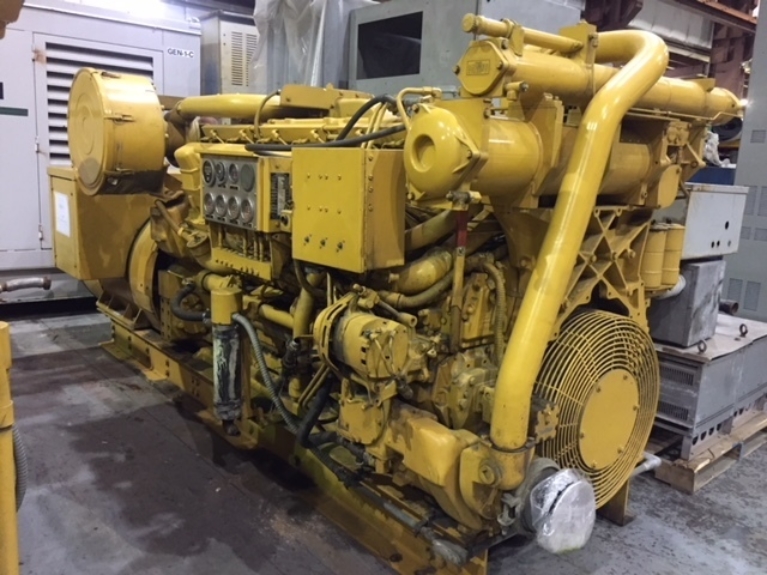

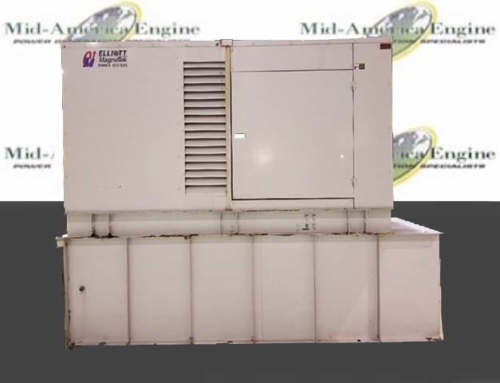


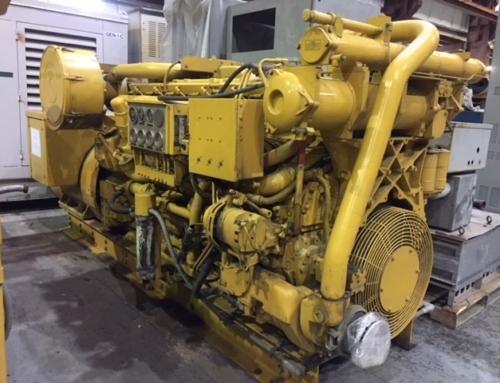
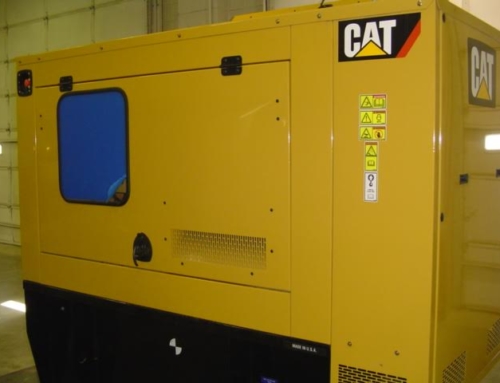



![Commercial Generators Buying Guide 2024 [By Generator Specialist] 10 Commercial Generator](https://www.midamericaengine.com/wp-content/uploads/2016/07/Another-Commercial-Power-Project-Completed-66x66.jpg)
![Natural Gas Generators Buying Guide 2024 [By Generator Specialist] 11 natural gas generators](https://www.midamericaengine.com/wp-content/uploads/2018/09/IMG_8223.JPG-66x66.jpeg)

Leave A Comment